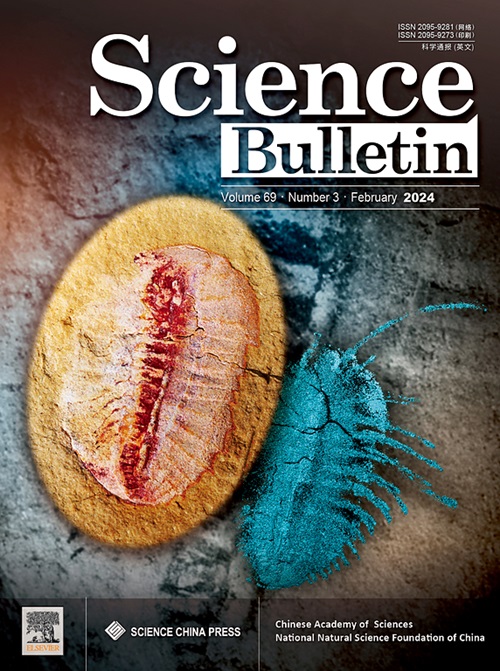Molecular architecture and inhibition mechanism of human ATR-ATRIP
IF 18.8
1区 综合性期刊
Q1 MULTIDISCIPLINARY SCIENCES
引用次数: 0
Abstract
The ataxia telangiectasia–mutated and Rad3-related (ATR) kinase is a master regulator of DNA damage response and replication stress in humans. Targeting ATR is the focus of oncology drug pipelines with a number of potent, selective ATR inhibitors currently in clinical development. Here, we determined the cryo-EM structures of the human ATR-ATRIP complex in the presence of VE-822 and RP-3500, two ATR inhibitors currently in Phase II clinical trials, achieving an overall resolution of approximately 3 Å. These structures yield a near-complete atomic model of the ATR-ATRIP complex, revealing subunit stoichiometry, intramolecular and intermolecular interactions, and critical regulatory sites including an insertion in the PIKK regulatory domain (PRD). Structural comparison provides insights into the modes of action and selectivity of ATR inhibitors. The divergent binding modes near the solvent side and in the rear pocket area of VE-822 and RP-3500, particularly their disparate binding orientations, lead to varying conformational changes in the active site. Surprisingly, one ATR-ATRIP complex binds four VE-822 molecules, with two in the ATR active site and two at the ATR-ATR dimer interface. The binding and selectivity of RP-3500 depend on two bound water molecules, which may be further enhanced by the substitution of these bound waters. Our study provides a structural framework for understanding ATR regulation and holds promise for assisting future efforts in rational drug design targeting ATR.
人ATR-ATRIP的分子结构及抑制机制。
共济失调毛细血管扩张突变和rad3相关(ATR)激酶是人类DNA损伤反应和复制应激的主要调节因子。靶向ATR是肿瘤药物开发的重点,目前有许多有效的、选择性的ATR抑制剂正在临床开发中。在这里,我们确定了在VE-822和RP-3500(两种目前处于II期临床试验的ATR抑制剂)存在下的人类ATR- atrip复合物的冷冻电镜结构,达到了大约3 Å的总分辨率。这些结构产生了一个接近完整的ATR-ATRIP复合物的原子模型,揭示了亚基化学计量学、分子内和分子间相互作用,以及包括PIKK调节域(PRD)插入在内的关键调控位点。结构比较提供了对ATR抑制剂的作用模式和选择性的见解。VE-822和RP-3500在溶剂侧附近和后囊区结合方式的不同,特别是结合方向的不同,导致活性位点的构象变化不同。令人惊讶的是,一个ATR- atrip复合物结合了四个VE-822分子,其中两个在ATR活性位点,两个在ATR-ATR二聚体界面。RP-3500的结合和选择性取决于两个结合水分子,这两个结合水的取代可能进一步增强其结合和选择性。我们的研究为理解ATR调控提供了一个结构框架,并有望为未来针对ATR的合理药物设计提供帮助。
本文章由计算机程序翻译,如有差异,请以英文原文为准。
求助全文
约1分钟内获得全文
求助全文
来源期刊

Science Bulletin
MULTIDISCIPLINARY SCIENCES-
CiteScore
24.60
自引率
2.10%
发文量
8092
期刊介绍:
Science Bulletin (Sci. Bull., formerly known as Chinese Science Bulletin) is a multidisciplinary academic journal supervised by the Chinese Academy of Sciences (CAS) and co-sponsored by the CAS and the National Natural Science Foundation of China (NSFC). Sci. Bull. is a semi-monthly international journal publishing high-caliber peer-reviewed research on a broad range of natural sciences and high-tech fields on the basis of its originality, scientific significance and whether it is of general interest. In addition, we are committed to serving the scientific community with immediate, authoritative news and valuable insights into upcoming trends around the globe.
 求助内容:
求助内容: 应助结果提醒方式:
应助结果提醒方式:


